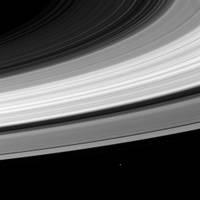Saturn is the second largest planet in the Solar System. Like the other gaseous outer planets – Jupiter, Uranus and Neptune – it has an atmosphere made up mostly of hydrogen and helium. Saturn’s distinctive, bright rings are made up of ice and rock particles ranging in size from grains of sand to a freight container. If water exists on Titan, it cannot be in liquid form because its surface is far too cold (at minus 180°C). In fact very little is yet known about the surface and scientists speculate that Huygens may find lakes or even oceans of a mixture of liquid ethane, methane and nitrogen.
The Cassini-Huygens mission is named after two European astronomers from the 17th century. The Dutch astronomer Christiaan Huygens (1629-1695) discovered Saturn's rings and Titan. The Cassini-Huygens mission to Saturn FULL TEXT
CASSINI PHOTO ESSAY
PHOTO SOURCE: NASA Cassini-Huygens Mission
TEXT SOURCE: ESA















No comments:
Post a Comment